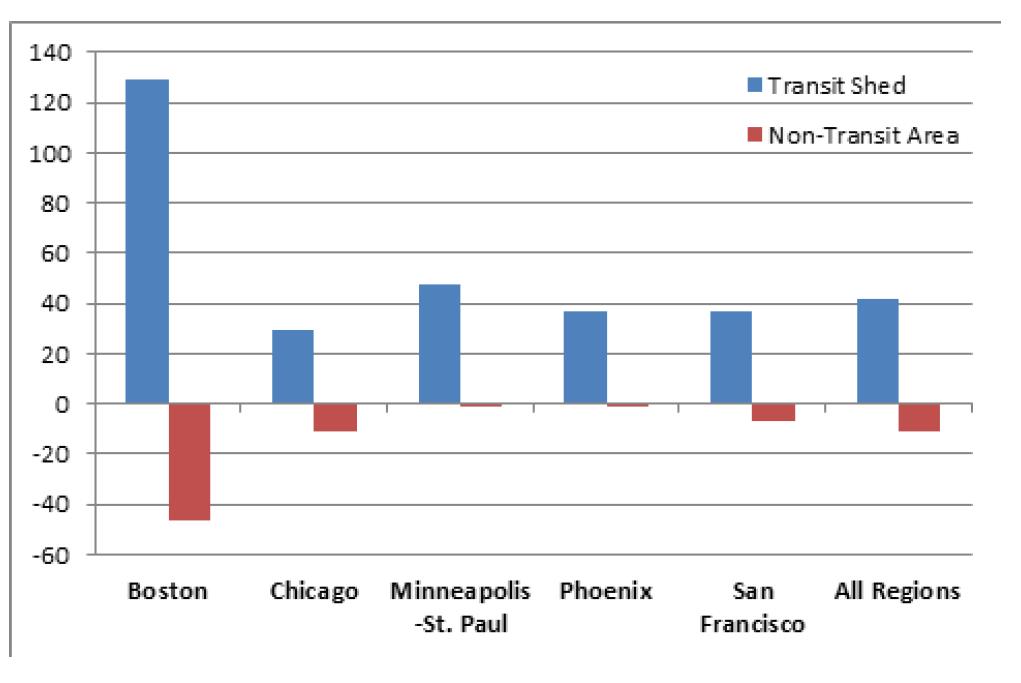The Negative Side of Rapid Transit

By Melanie Reuter
The numbers indicate that the research is correct. The creation of Rapid Transit stations in Metro Vancouver has caused a spike in commercial vacancies for buildings NOT located next to the stations. As new space is built adjacent to the stations, businesses formerly located in suburban office parks (to which 90% of the employees drive) are packing up and moving closer to the Rapid Transit stations resulting in a dearth of commercial tenants in outlying areas.
Businesses know that the movement of a large number of people is conducive to increased retail activities, expanding the attractiveness of the area to commercial investors and retailers. They are attracted to world class areas that are comprised of the exceptional ability to move their goods, and their people, in and out with ease. Employees are attracted to businesses that reflect their values, in this case both ease of travelling to and from work, saving money on housing and commuting, and in some cases, a lighter impact on the environment by utilizing transit to and from work.
Businesses also know that to attract the next/current group of employees the millennial generation, they businesses must be accessible. Millennials want to work, play, and live in transit accessible areas. It is anticipated that we will see an increased number of people living in the downtown for the lifestyle it offers and commuting OUT to employment in adjacent communities located easily along the Rapid Transit route, as attractive job offers combined with ease of accessibility to get there arise.
Like any real estate market, it is important to get granular and realize that the increased vacancy rate is not spread evenly across the cities. It is the businesses located outside of walking distance to the stations that are feeling the pressure of increased vacancy and declining rents. Research indicates that vacancies are 2/3rds higher than locations within one kilometre of a station. Currently in BC, Surrey and Richmond are feeling the pressure of increased vacancies (21% and 17% respectively), due to the creation of new office and business space in transit oriented developments (TOD)), 21% and 17% respectively.
Recent research conducted in five major regions in the United States demonstrated exceptional findings: properties located within the vicinity serviced by fixed guideway transit (Light Rapid Transit (LRT) such as Vancouvers SkyTrain or heavy and commuter rail, such as Ontarios GoTrain) outperformed the region as a whole by 41.6%. If values dropped across the board, as evidenced in almost all communities in the US, those properties within the transit-shed experienced a smaller drop.
Figure 1. Percent Change in Average Residential Sales Prices Relative to Region, 2006-2011

Source: American Public Transportation Association, 2013
Whether you are considering buying, building, or leasing commercial space, keep in mind the tremendous impact of accessibility. The ability to attract the best talent and lots of customers and clients is positively correlated to location along Rapid Transit lines across North America. The value of your real estate and your business is also elevated in boom times, and insulated in down turns.
Melanie Reuter is the Director of Research with REIN and a Real Estate Investor owning both single and multi-family units. She has a Master of Arts Degree from California State University, San Bernardino and a BA from Simon Fraser University in Burnaby, BC.
{{cta(‘8d2c2b7e-9f3d-451c-8b5e-7795129de36e’)}}




